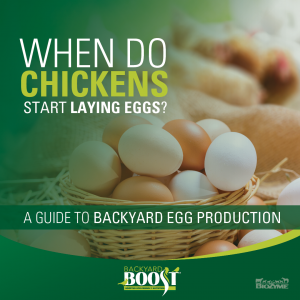
Spring Songbirds
As the seasons change, so does the avian landscape. In spring, of course, we get to welcome back the migratory songbirds that grace our skies with their bright colors and brilliant melodies. Even though it’s still pretty chilly out, spring is fast approaching.
That’s why the Backyard Boost® team thinks it’s the perfect time to deep-dive into the world of these winged wanderers. Even more exciting, create a guide for how to prepare for the much-anticipated return of migratory birds in the spring.
The migration of songbirds is a breathtaking spectacle, as they journey thousands of miles to their breeding grounds, signaling the rejuvenation of nature. As bird enthusiasts and nature lovers, it’s our duty to create a welcoming environment for these travelers. This ensures their safe arrival, and best of all, encourages their stay.
Now is the time to prepare for return of songbirds. From choosing bird-friendly plants to setting up strategically placed feeders and nesting boxes, we’ll provide insights on how to attract and support these marvelous creatures. Let’s get started.
What is Migration?
The journeys of migratory songbirds are nothing short of extraordinary, showcasing the innate navigational skills and resilience of these avian travelers.
Each year, millions of spring songbirds embark on incredible journeys that span thousands of miles, as they migrate between their breeding and wintering grounds. Understanding the common migratory routes and destinations of these birds adds a layer of awe to this marvel of nature.
Why Do Birds Migrate?
Migration is an innate behavior observed in many bird species, driven by factors such as seasonal changes, availability of resources and breeding cycles. For migratory songbirds, they need to seek optimal conditions for breeding and foraging fuels in these awe-inspiring journeys.
Birds migrate for two very simple reasons. Birds are seeking food sources and nesting locations. Northern hemisphere birds typically will fly south in the late fall because the inventory of their favorite foodstuff – bugs – starts to decline. Trees are losing leaves and grasses are dying, both are important resources for building nests.
While some might think the temperature shift has something to do with migration, it actually does not. One source shares that even the small little hummingbirds can survive freezing cold temps, if they have adequate food.
Conversely, as food and nesting resources become available again in the early spring, birds start making their way back north.
Migration Types
Migration can be simply defined as any time a large population shift of animals occurs. There are three types of migration:
- Short-distance migration patterns include relatively small movements, like those that move from higher to lower elevations on a mountainside.
- Medium-distance migration covers distances up to a few hundred miles.
- Long-distance migration patterns move groups thousands of miles. For example, birds can fly from breeding ranges in the United States and Canada to Central and South America. Long-distance migration is a habit for more than 350 species of North American birds.
Where Do Birds Migrate?
The short answer? Migratory routes vary among species. However, certain flyways are well-known for hosting large numbers of songbirds during migration. These primary flyways include:
Atlantic Flyway
This route stretches along the eastern coast of North America, guiding birds from the Arctic to South America.
Mississippi Flyway
This route spans from Canada to the Gulf of Mexico. The Mississippi Flyway follows the course of the Mississippi River and sees vast numbers of migratory birds.
Central Flyway
Positioned in the central part of North America, this flyway caters to birds moving between Arctic regions and the southern hemisphere.
Pacific Flyway
Along the western coast of North America, this route accommodates birds migrating from Alaska to South America.
What To Do When Spring Songbirds Return
As vegetation and insects return to the United States and Canada, so do the songbirds. In most parts, this won’t happen until at least March. However, in the far south like Texas, Florida and the Gulf Coast, some songbirds will start reappearing later this month.
BirdCast is a live bird migration map that allows birders to track migration patterns in real-time and geographic location. It is created and maintained by the Cornell Lab of Ornithology.
If you want to help prepare for the spring songbirds’ return, there are several steps you can take to make them feel welcome as they migrate or take up residence in your backyard.
Plan for Spring Songbirds
Prepare your Bird Feeders
If you have left your bird feeders out during the winter for non-migratory birds, be sure to clean them up. You will also want to ensure the bird feed flows properly so your spring songbirds can get the feed they require.
There are a variety of bird feeders available on the market. To attract the widest variety of birds, try placing some of each kind in your yard.
Fill your Bird Feeders
Once you have your bird feeders cleaned and placed in the proper location, fill them with the proper type of feed. For example, you would only put suet in a suet feeder. We recommend Backyard Boost® Songbird Balls in a tube feeder.
Backyard Boost Songbird Balls are prebiotic treats for wild birds. They provide digestive support for overall well-being while attracting a variety of birds for your viewing pleasure. The Songbird Balls contains AO-Biotics® Amaferm®, a prebiotic research-proven to enhance digestibility.
These prebiotic treats fit nicely in a tube feeder or other wire feeders and cause less waste and mess than traditional bird seed. While the birds you love to watch are eating away on their treats, they are also getting great nutrition.
“These easy-to-use Songbird Balls fit great in wire and tube feeders, and they create less mess and less stress when it comes time to refill your feeders,” said Samantha Taylor, BioZyme® Inc., Marketing Brand Administrator, Backyard Boost. “They contain sunflower seeds and other grains that attract so many birds, in addition to Amaferm, which helps keep the birds healthy and happy.”
Don’t Forget the Bath
So, you may be thinking that bird baths are no big deal. Not so!
Bird baths play a pivotal role in creating an inviting and nurturing environment for spring songbirds. As migratory birds return and resident species become more active, access to clean and fresh water becomes crucial for their well-being.
During the spring, birds engage in various activities, including foraging, nesting and bathing. Bird baths serve as essential watering holes, providing birds with a reliable source of hydration for drinking and bathing. It’s especially helpful for those long-distance migrators that want to get the ocean salt out of their feathers and off their feet.
Clean water not only quenches their thirst but also helps them maintain their plumage in optimal condition, crucial for flight and insulation.
Bird Bath Tips:
Choosing a shallow bird bath with textured surfaces allows birds to comfortably bathe without the risk of drowning. Adding stones or pebbles to the bath provides perching spots, enabling birds to safely access the water.
Ensuring the water is regularly replenished and the bath is kept clean prevents the spread of diseases and encourages frequent visits from a diverse array of feathered visitors.
And also make sure your bird bath is clean and sanitized with fresh, clean water in it. Place your bird bath(s) under trees or near bushes so the birds have shelter.
Provide a Nest Starter
Winter is a bare, desolate time. Chances are your yard is pretty bare, too, meaning there might not be a lot of resources for birds to build nests with. As a bird enthusiast who wants your spring songbirds to stay for your viewing enjoyment, they need a home.
Leave them some nest-building materials to get started. The best items to leave them are feathers, string, yarn, tiny twigs, dried moss and pet fur.
More about the Songbird Balls
The Songbird Balls are one of four products in the Backyard Boost line, originally created for backyard chicken enthusiasts by BioZyme. Because the company wants to have an undeniable impact on all living creatures, they expanded this line to include a product that would benefit wild birds as well.
Backyard Boost Songbird Balls come in packages of six. If you don’t currently have a feeder that will accommodate them, BioZyme also sells a circular tube feeder that fits the ball-shaped bird treat.
Buy your Songbird Balls Today!
Spring is when the world comes back to life. And returning migratory birds can help your yard do the same. That’s why Songbird Balls are a great investment if you want to make your yard a hub for returning spring songbirds.
The Songbird Balls are available online and on a variety of e-commerce sites including Amazon, Walmart.com.
Do you prefer to shop locally? Locate your nearest Backyard Boost retail store using our online dealer locator tool.
Stay Up to Date
You can sign up for our monthly electronic newsletter or find out more information about spring songbirds and the birds in your area.

